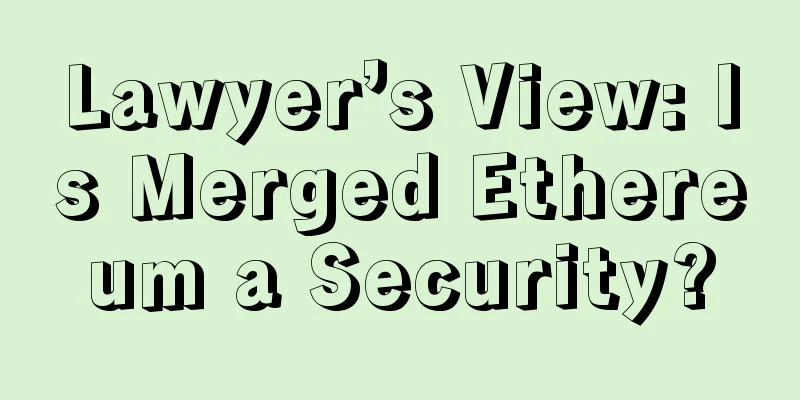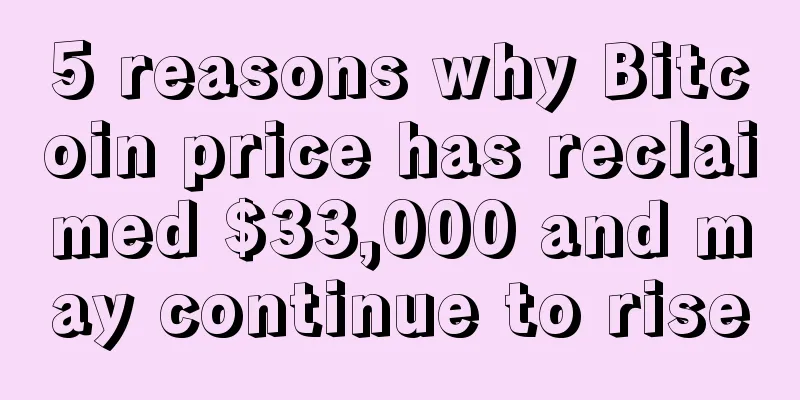Lawyer’s View: Is Merged Ethereum a Security?

|
From its creation, the debate over the nature of ETH has been difficult to pin down, and has only intensified with the recent transition of the protocol to a “proof-of-stake” (PoS) transaction validation mechanism. The core is whether ETH is a commodity or a security. Gary Gensler, chairman of the U.S. Securities and Exchange Commission (SEC), was the first to talk about this after the "merger". His main position therefore boils down to the fact that most crypto tokens qualify as “securities” under the Howey test. According to this test, an investment contract exists if “an investment of money is made in a common enterprise with a reasonable expectation of profit from the activities of the other participants.” According to Gary Gensler , after switching to POS, Ethereum began to reflect more of the nature of securities, because "token staking is very similar to lending", and investing in Ether is actually associated with the expectation of profit, because the activities of all stakeholders ("other participants") allow the entire verification mechanism to exist, even if the profit of a specific stakeholder depends on his specific interests. Meanwhile, the Responsible Financial Innovation Act (RFIA) calls most digital currencies commodities, which should include ETH. RFIA provides clear criteria for determining when a digital asset is considered a commodity and when it is considered a security. Tokens issued under an investment contract would qualify as “ancillary assets” if the asset does not give the owner corporate rights. RFIA clearly distinguishes ancillary assets from the underlying investment contract that records the ancillary asset transfer agreement. It turns out that as long as ETH gives the company rights, including receiving dividends, it is a commodity. Note: On June 7, 2022, U.S. Senators Cynthia Lummis (R-WY) and Kirsten Gillibrand (D-NY) introduced the Responsible Financial Innovation Act (RFIA) (S. 4356), which aims to establish a regulatory system for digital assets in the United States. This highly anticipated bill aims to address the long-standing uncertainty of financial regulators over their jurisdiction over digital assets, clarify tax issues for digital assets and decentralized autonomous organizations (DAOs), and establish information disclosure and consumer protection obligations for issuers and service providers of digital assets. The same logic is used in the recent Senate Agriculture Committee Digital Goods Consumer Protection Act (the “Act”), which was released in early August. The bill defines "digital commodities," which include Bitcoin and Ethereum, and excludes certain financial instruments that include securities. As a result, the Commodity Futures Trading Commission ("CFTC") specifies its jurisdiction over ETH, but leaves room for regulation of other assets that are securities-related and will be regulated by the SEC. The bill will systematize the process by which digital assets are determined to be commodities. The bill also gives the CFTC exclusive jurisdiction over digital commodity transactions, except for transactions where the seller or consumer uses the digital commodity solely to purchase or sell goods or services. As we can see, there are different ways to regulate ETH. In my opinion, the difference in approach is due to the special nature of ETH: 1. In the case of staking, we are talking about the income earned by placing tokens as a mechanism to validate blockchain transactions. Yes, it is very similar to debt securities. 2. ETH may be the subject of an asset sale transaction. In this case, it is a commodity. Therefore, depending on the proven functionality of Ethereum, there will be applicable regulations in specific situations. Despite the introduction of legislative provisions regarding the legal nature of ETH, the SEC will not relax its supervision of digital assets, especially ETH. In the near future, we will likely witness several public cases when the SEC and CFTC will actually establish their jurisdiction over the nature of ETH. These cases will form the basis for future laws that will simply address faits accompli. About the author: Web3 lawyer with more than 10 years of experience in the corporate and intellectual property fields. Main areas of expertise are general corporate law, mergers and acquisitions, NFT, venture capital, intellectual property, contracts, WEB3, and legal due diligence. |
<<: How to invest in cryptocurrencies in an uncertain market environment?
>>: Cobo Security Team: Hidden Risks and Arbitrage Opportunities in ETH Hard Fork
Recommend
What is the fortune of a man with a mole on his chest?
Moles are very common and appear in various parts...
What features reveal your flaws?
What features reveal your flaws? No gold is pure,...
In the Berlin upgrade, what is the significance of EIP-2929 increasing gas costs?
Written by: Vitalik Buterin Translation: ETH Chin...
Is it good for a woman with a high forehead?
Is it good for a woman with a high forehead? The ...
Do women with flat noses have good luck in love?
Sometimes, we say that a person's fortune can...
Are there any taboos for bedroom placement for people with moles on their hands?
I believe that everyone will decorate their bedro...
A cold and boring appearance
A cold and boring appearance Even in love, the fa...
Mole position and destiny of women, diagram of women's mole fortune
In the previous article, we discussed in detail w...
Ethereum is ready to take over the market
Author | Hashipi Analysis Team...
Illustration of the love line in palmistry for those with good relationships with the opposite sex
How to read the love line diagram in palmistry? T...
Exploring the ambiguous value proposition of non-fungible tokens
Digital currencies such as Bitcoin are valuable a...
A woman with a narrow forehead
As the saying goes, if a woman has a round and fu...
Palmistry to interpret a woman's rational line
Palmistry to interpret a woman's rational lin...
How to see personality and destiny from nasolabial lines and lips
The nasolabial folds are the two symmetrical line...
What kind of couples can't last long?
Everyone wants to find someone who is right for t...









